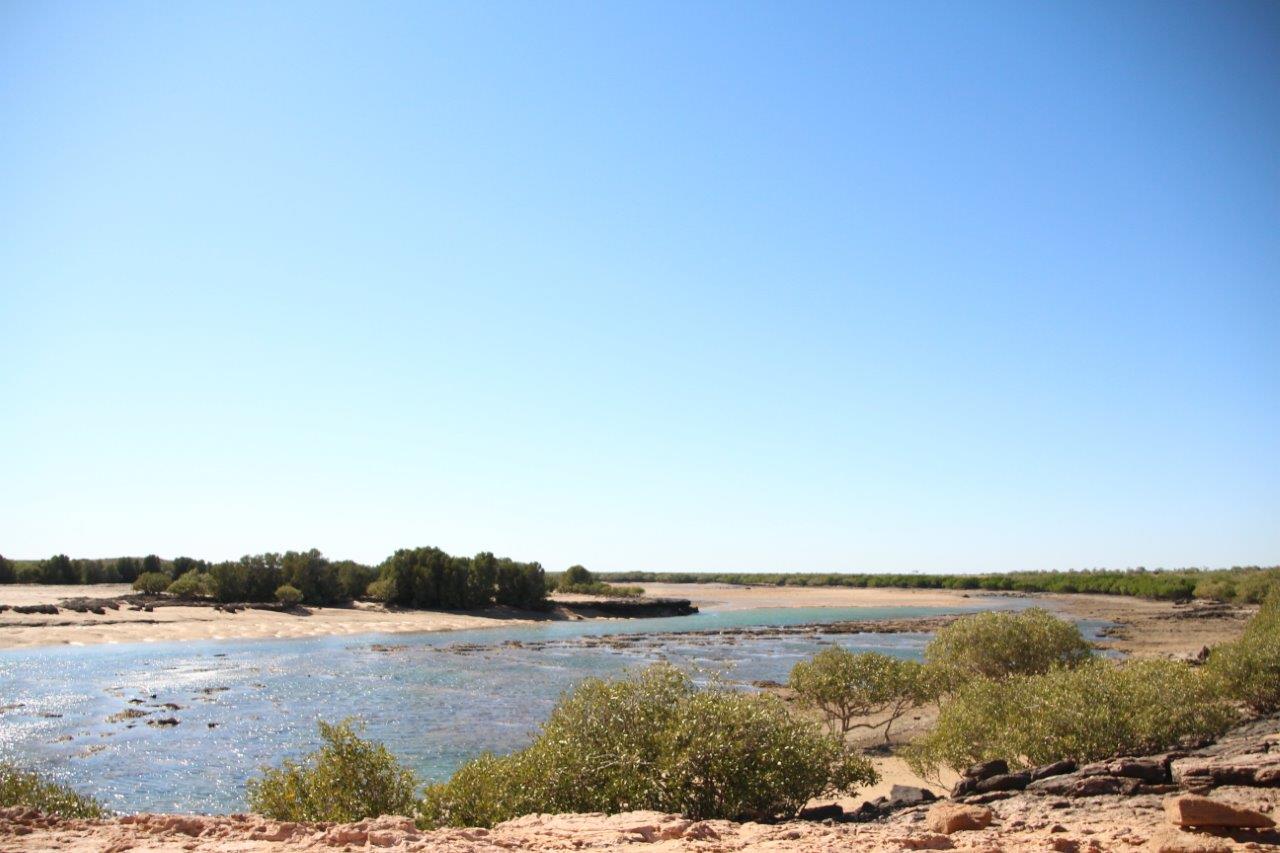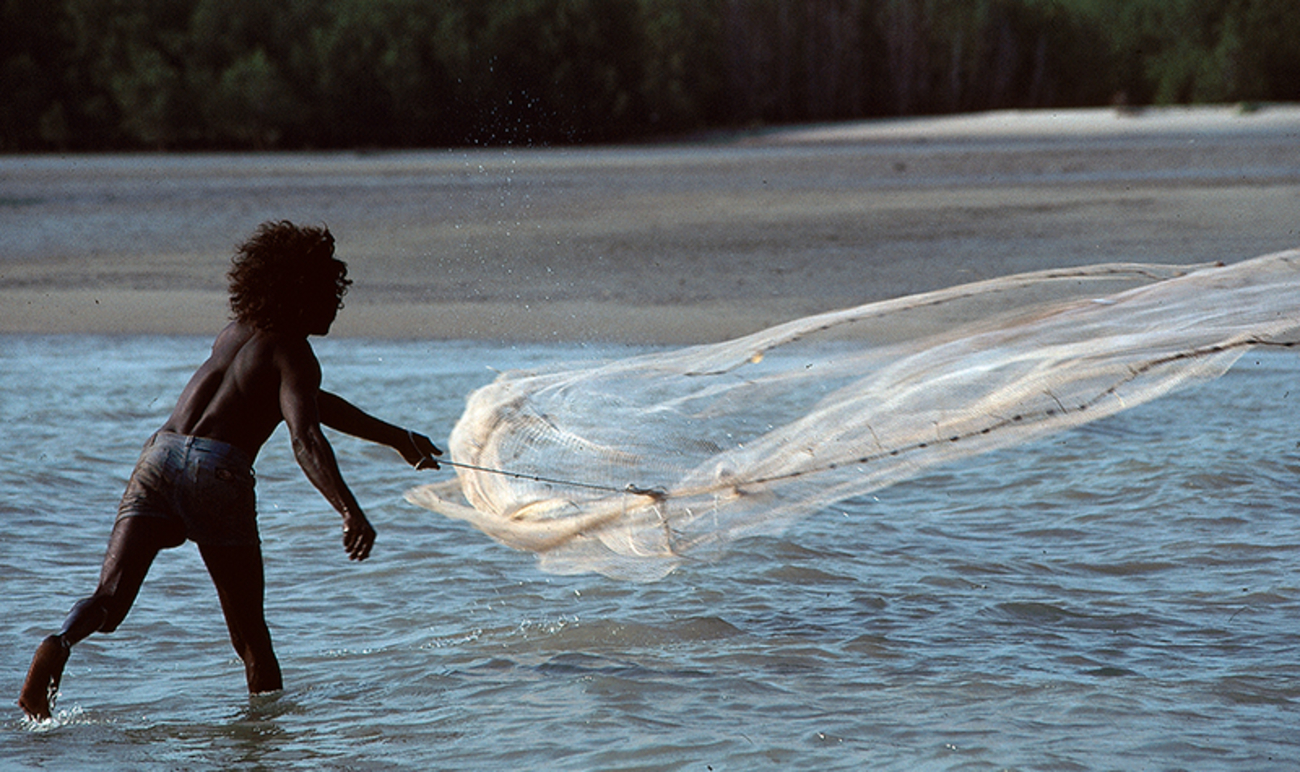Water is the life for us all. It’s the main part. If we are gonna lose that I don’t know where we gonna stand. If that water go away, everything will die. That’s the power of water. He connect with the land. Pukarrikarra (the dreaming) put ‘em all together. One life. — John ‘Dudu’ Nangkiriyn1
The importance of land to Indigenous people has long been recognised in reconciliation efforts, but the cultural, social, spiritual and economic significance of water has received somewhat less attention.
For many First Nations people, water provides a link between ancestors, culture, and identity. In many communities, water is inextricable from the land and the people themselves. The health of the water, and all that lies beneath its surface, is crucial to the health of traditional custodians living off their waters.
Legal rights to water
At the time of colonisation, the land was wrongly deemed ‘terra nullius’ or ‘land belonging to no-one’. Today, prominent academic and Indigenous rights activist Virginia Marshall argues that we are dealing with the ongoing legacy of a fiction of ‘aqua nullius’.2
Over the past 29 years, some Aboriginal and Torres Strait Islander peoples have been able to regain title to their traditional lands under native title.
Native title was first recognised in 1992 in a High Court case called Mabo v Queensland (No 2),3 and later passed into legislation by the Native Title Act 1993 (Cth) (NTA).
Native title recognises that Aboriginal and Torres Strait Islander peoples have their own systems of law and custom by which they have rights to land and waters, and that these systems have endured beyond colonisation.
However, under native title legislation there is no clear right to take the water itself, other than small amounts for cultural purposes.4 Despite native title covering 40 per cent of Australia’s land,5 Aboriginal people hold rights to just 0.2 per cent of the surface water.6
In addition to native title, some Aboriginal communities have regained land and waters through state and territory-based land rights Acts.7 Rights under these laws are usually more extensive because the land is owned as ‘freehold’, the strongest form of land ownership in Australia.8
In addition, groups in the Northern Territory with land that includes coastal areas can apply to have the coast declared a ‘sea closure’. This means they have the right to control who can enter and fish in the adjacent waters up to two kilometres off the coast.9 Similar rights exist under native title legislation, but to date they have not extended to the right to exclude others without additional policy mechanisms in place.10
Livelihoods and water
Under section 211 of the NTA, native title holders can hunt and fish in their waters without a licence. However, there are still many challenges. For example, these rights are usually limited to ‘personal and domestic’ uses, which prevents traditional owners from the commercial development of their waters for the benefit of their peoples.11
More recently, some judges have considered commercial rights where groups can show that traditionally they have a right to take resources for any purpose.12 But for Aboriginal and Torres Strait Islander peoples without a native title determination, practicing cultural fishing – even for personal use – can result in prosecution.
For years, AIATSIS has partnered with salt and fresh water communities across the country to share their stories, and facilitate the changes necessary to help First Nations carry out their cultural duties to protect their land and waters.
We are currently working with traditional owners on the South Coast of NSW to explore options for protecting and strengthening their rights to fish.
References
1 John ‘Dudu’ Nangkiriyn in S Yu and Ngapa Kunangkul, Living Water, Report on the Aboriginal Cultural Values of Groundwater in the La Grange Sub-Basin (1999).
2 Virginia Marshall, Overturning Aqua Nullius: Securing Aboriginal Water Rights (Aboriginal Studies Press, 2017).
3 [1992] HCA 23.
4 Native Title Act 1993 (Cth) s 211(3).
5 Geospatial Services, National Native Title Tribunal, Determinations Map, accessed 19 February 2021 http://www.nntt.gov.au/Maps/Determinations_map.pdf Geoscience Australia, ‘Area of Australia – States and Territories’ (web page) https://www.ga.gov.au/scientific-topics/national-location-information/dimensions/area-of-australia-states-and-territories
6 Scott Hamilton, Stuart Kells, ‘Always Was and Always Will Be Aboriginal Water’, Pursuit (Blog Post, 22 September 2020) https://pursuit.unimelb.edu.au/articles/always-was-and-always-will-be-aboriginal-water
7 See, eg, Aboriginal Land Rights (Northern Territory) Act 1976 (Cth).
8 Owners of freehold titles can do as they wish with the land as long as they comply with relevant laws and can exclude others from the land.
9 Australian Institute of Aboriginal and Torres Strait Islander Studies, ‘The Right to Fish’ (web page) https://aiatsis.gov.au/right-fish
10 See, eg, Yaegl People #2 v Attorney General of New South Wales [2017] FCA 993.
11 See, eg, Foster on behalf of the Gunggari People (No 3) v Queensland [2014] FCA 1318.
12 Akiba v Commonwealth [2013] HCA 33.

